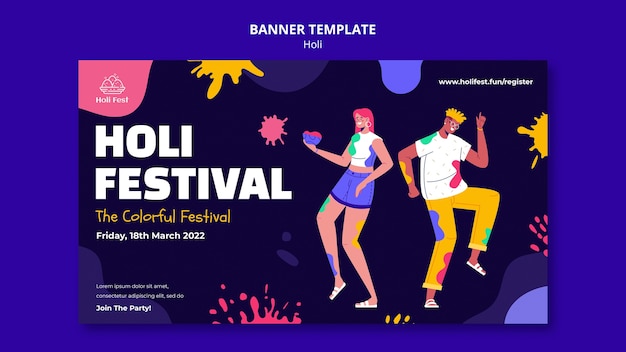Cultural festivals serve as vibrant reflections of diverse human experiences and historical narratives, connecting communities in a rich tapestry of tradition and innovation. The imagery associated with these celebrations plays a crucial role in conveying their essence, thereby fostering a deeper appreciation for cultural uniqueness. Among the myriad ways to engage with and promote a cultural festival, the development and utilization of a captivating banner stands out. Such a banner not only serves a practical purpose by advertising the event but also evokes an emotional response, sparking curiosity and inviting introspection.
At its core, a cultural festival banner is a visual representation that encapsulates the spirit of the festival. The design elements—color palettes, typography, and imagery—combine to communicate meaning succinctly and powerfully. A well-crafted banner can elevate an ordinary event into an extraordinary celebration, enticing potential attendees and invoking a sense of wonder. Artistry applied in these banners often utilizes local motifs, traditional patterns, and symbolic colors, which can prompt spectators to learn more about the cultural significance behind these choices.
One of the primary roles of a cultural festival banner is to convey crucial information. This includes the festival’s name, date, location, and any special features or performances that may occur. However, the efficiency of this communication hinges on the visual appeal of the banner. An effective design captures the viewer’s attention in mere seconds, creating an imperative link between the observer and the event. Banners can employ high-quality images—such as the joyous celebrations depicted in cultures around the world—to generate interest. When individuals see captivating artwork or dynamic photography, it piques their curiosity and motivates them to seek more details about the festival.
Moreover, cultural festival banners often embody the values and narratives inherent to their respective cultures. They can narrate tales of historical significance or represent the ongoing relevance of particular traditions. For instance, a banner promoting a Holi festival may incorporate splashes of color that denote the playful spirit of the celebration, while also highlighting its deeper meanings of renewal and purity. Through such artistic expressions, these banners provide audiences with a glimpse of the values cherished by the culture they represent, fostering dialogue and promoting understanding amongst diverse groups.
Additionally, digital design tools have revolutionized the process of creating cultural festival banners, allowing for increased creativity and accessibility. Free resources and templates enable organizers, regardless of their artistic capabilities, to produce aesthetically pleasing banners. With the rise of versatile software like Photoshop, even novice designers can manipulate layouts and colors to create a personalized touch for their events. This democratization of design encourages more communities to express their cultural narratives, amplifying the resonance of various festivals.
Furthermore, the sustainability of festival banners is an essential consideration, particularly in our contemporary climate-conscious landscape. Many organizers are now opting for eco-friendly materials and printing techniques, which not only lessen the environmental impact but also send a strong message about the festival’s commitment to sustainability. Banners made from recycled materials or biodegradable alternatives illustrate a respect for the planet that resonates with increasingly eco-aware audiences. Such decisions reflect a broader shift in perspective where cultural celebrations align with responsible stewardship of the Earth.
Moreover, the psychological impact of a culturally-themed festival banner cannot be overlooked. Color psychology plays a pivotal role in influencing emotions and behaviors. Bright, warm colors like red, yellow, and orange often evoke feelings of joy and enthusiasm, enticing individuals to participate in festivities. Conversely, cooler tones may promote calmness and introspection, suitable for festivals that highlight spiritual or reflective themes. Thus, when crafting a banner, understanding the psychological implications of color choices can be vital in effectively communicating the intended message and atmosphere of the event.
As digital mediums become more prevalent, the potential for cultural festival banners to reach wider audiences expands exponentially. Online platforms facilitate the sharing of banners, allowing communities to not only promote their events locally but also globally. This capability fosters cross-cultural interactions, expanding the visibility of various festivals and encouraging a dialogue between different societies. Online engagement—even through mere shares and likes—can generate curiosity about cultural practices that may be unfamiliar to many, thereby cultivating an environment rich in learning and discovery.
Beyond their promotional functionality, cultural festival banners also serve as artifacts. They encapsulate the spirit of the time in which they were created and can be collected or preserved as historical representations of cultural expression. When examined, these artifacts tell stories of evolution, adaptation, and resilience within communities. This historical context infuses the banners with greater significance, urging individuals to appreciate the deeper narratives woven into our shared human experience.
In conclusion, the cultural festival banner is not merely a tool for advertising; it is a profound emblem of cultural identity, creativity, and community spirit. Effective design engages, informs, and invites curiosity, while also fostering respect for our planet. As audiences interact with these visually captivating pieces, they are encouraged to delve deeper into the layers of meaning behind cultural celebrations. By recognizing the potential of a well-crafted banner, we can initiate a societal shift towards deeper understanding, appreciation, and dialogue across the diverse tapestry of human cultures.
